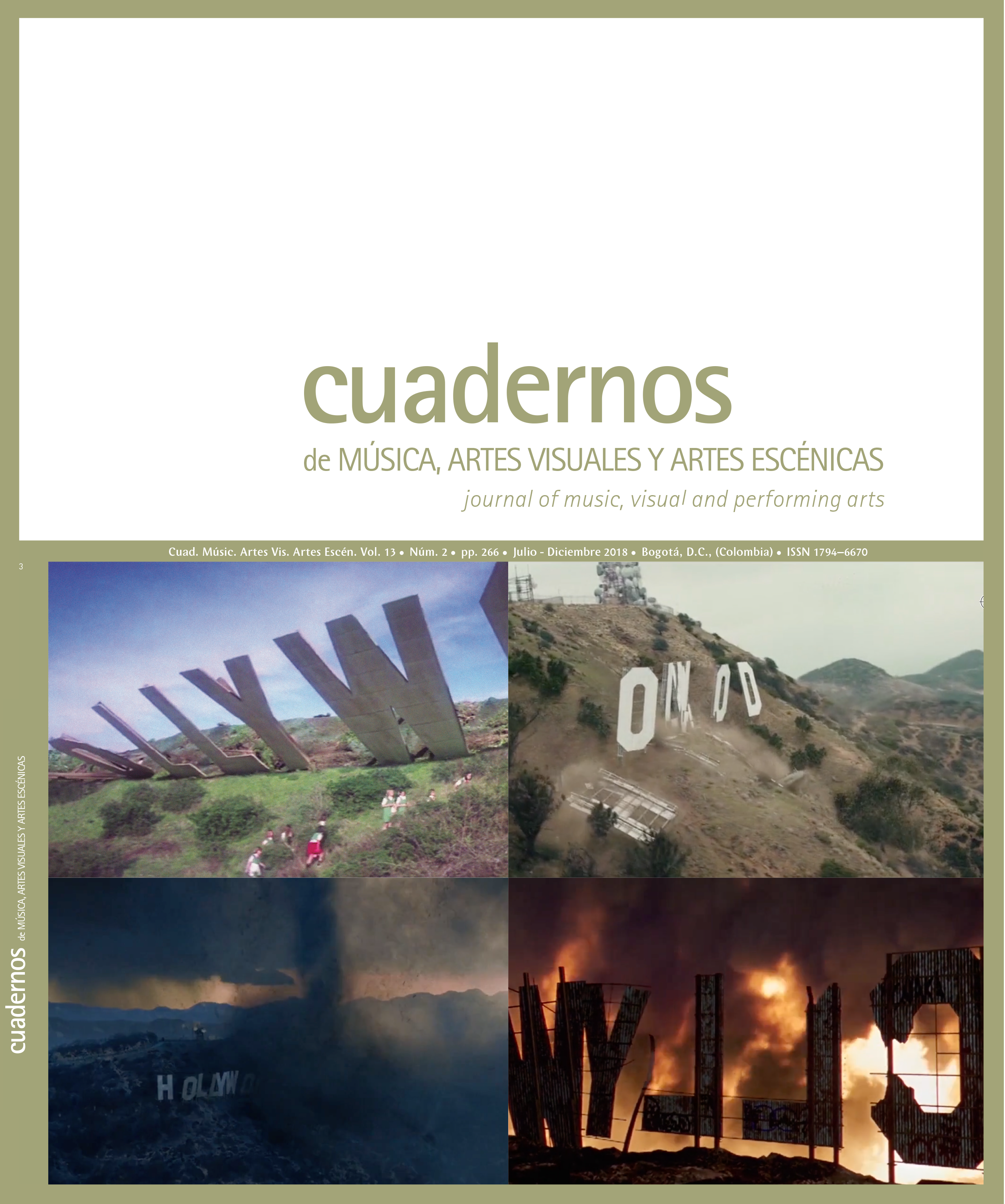Abstract
Representation of time in art entails a transfer of the individual’s time to technical and material aspects that give shape to its sign, affecting the way we relate to time based on quantification. Thus, what does contemporary art attempt to problematize through works involving temporal delays? To this problem, we propose the following: works addressing delays propose temporal extension as a way to relate with time that is opposed to the instant nature of the current technique—real time—, generating an extension that provides a new experience in technical time: slowness. The analysis is approached from the works of Jonathan Schipper (Slow Motion Car Crash, 2012), Douglas Gordon (24 Hour Psycho, 1993), and Dan Graham (Present Continuous Past(s), 1974), where we attempt to halt the unstoppable flow of time.
Bauman, Zygmunt. 2012. Modernidad líquida. Traducido por Mirta Rosenberg y Jaime Arrambride Squirru. México: Fondo de Cultura Económica.
Bergson, Henri. 1936. El pensamiento y lo movible. Traducido por Gonzalo San Martín. Santiago de Chile: Ercilla.
Deleuze, Gilles. 2008a. Kant y el tiempo. Buenos Aires: Cactus.
— 2008b. La imagen-movimiento: estudios sobre cine 1. Traducido por Irene Agoff. Buenos Aires: Paidós.
— 2009. La imagen-tiempo: estudios sobre cine 2. Traducido por Irene Agoff. Buenos Aires: Paidós.
Doane, Mary Anne. 2010. “Tiempo real: la instantaneidad y el imaginario fotográfico”. En El tiempo expandido, editado por Alberto Anaut, 61-88. Madrid: La Fábrica.
Graham, Dan. 1999. “Pesent Continuous Past(s)”. En Two-Way Mirror Power: Selected Writings by Dan Graham on His Art, editado por Alexander Alberro, 39-41. Massachusets: MIT Press.
Heidegger, Martin. 2007. Los conceptos fundamentales de la metafísica. Traducido por Alberto Ciria. Madrid: Alianza.
Kant, Immanuel. 2006. Crítica de la razón pura. Traducido por Pedro Rivas. Madrid: Taurus.
Leccardi, Carmen. 2014. Sociologías del tiempo: sujetos y tiempo en la sociedad de la aceleración. Traducido por Ana María Yévenes Ramírez. Santiago: Universidad Finis Terrae.
Monk, Phillip. 2014. “The Split of the Unconscious: 24-Hour Psycho”. En Time (Whitechapel: Documents of Contemporary Art), editado por Amelia Groome, 131-132. Cambridge: MIT Press.
Schipper, Jonathan. 2012. “Slow Motion Car Crash”, acceso el 10 de enero de 2018, https://jonathanschipper- cfh7.squarespace.com/slow-motion-car-crash/
Stiegler, Bernard. 2002. La técnica y el tiempo: la desorieniación. Vol. 2. Traducido por Beatriz Morales Bastos. Gipuzkoa: Argitaletxe Hiru.
Thrift, Scott. 2018. “ThePresent”, acceso el 11 de enero de 2018, https://timeincolor.com/products/thepresent
This journal is registered under a Creative Commons Attribution 4.0 International Public License. Thus, this work may be reproduced, distributed, and publicly shared in digital format, as long as the names of the authors and Pontificia Universidad Javeriana are acknowledged. Others are allowed to quote, adapt, transform, auto-archive, republish, and create based on this material, for any purpose, provided the authorship is duly acknowledged, a link to the original work is provided, and it is specified if changes have been made. Pontificia Universidad Javeriana does not hold the rights of published works and the authors are solely responsible for the contents of their works; they keep the moral, intellectual, privacy, and publicity rights.
Approving the intervention of the work (review, copy-editing, translation, layout) and the following outreach, are granted through an use license and not through an assignment of rights. This means the journal and Pontificia Universidad Javeriana cannot be held responsible for any ethical malpractice by the authors. As a consequence of the protection granted by the use license, the journal is able to publish retractions or to correct information already published. Publishing contents in this journal does not generate royalties for contributors.



